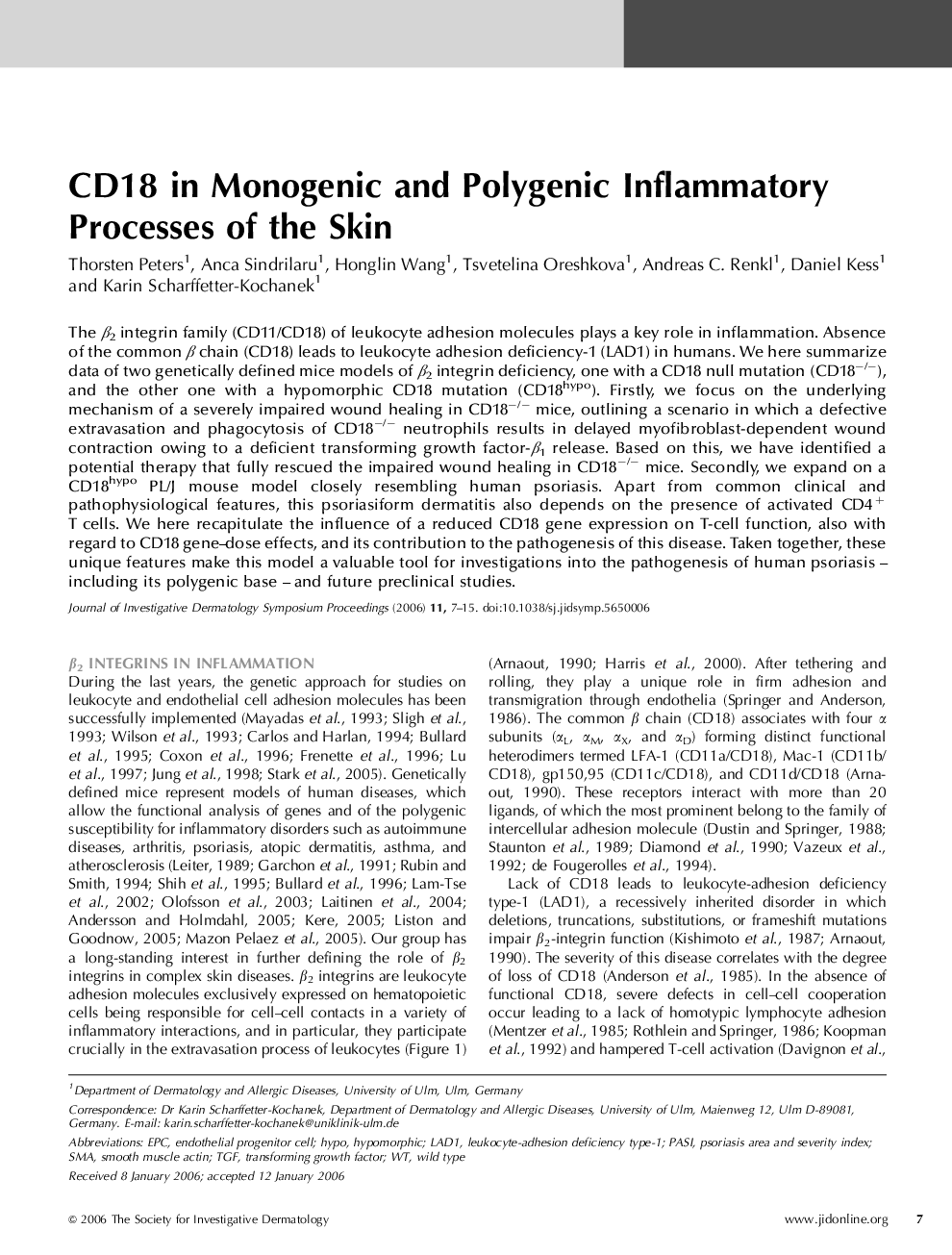| Article ID | Journal | Published Year | Pages | File Type |
|---|---|---|---|---|
| 3219008 | Journal of Investigative Dermatology Symposium Proceedings | 2006 | 9 Pages |
The β2 integrin family (CD11/CD18) of leukocyte adhesion molecules plays a key role in inflammation. Absence of the common β chain (CD18) leads to leukocyte adhesion deficiency-1 (LAD1) in humans. We here summarize data of two genetically defined mice models of β2 integrin deficiency, one with a CD18 null mutation (CD18−/−), and the other one with a hypomorphic CD18 mutation (CD18hypo). Firstly, we focus on the underlying mechanism of a severely impaired wound healing in CD18−/− mice, outlining a scenario in which a defective extravasation and phagocytosis of CD18−/− neutrophils results in delayed myofibroblast-dependent wound contraction owing to a deficient transforming growth factor-β1 release. Based on this, we have identified a potential therapy that fully rescued the impaired wound healing in CD18−/− mice. Secondly, we expand on a CD18hypo PL/J mouse model closely resembling human psoriasis. Apart from common clinical and pathophysiological features, this psoriasiform dermatitis also depends on the presence of activated CD4+T cells. We here recapitulate the influence of a reduced CD18 gene expression on T-cell function, also with regard to CD18 gene–dose effects, and its contribution to the pathogenesis of this disease. Taken together, these unique features make this model a valuable tool for investigations into the pathogenesis of human psoriasis – including its polygenic base – and future preclinical studies.
